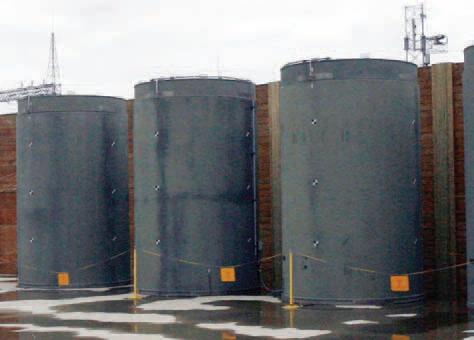
The termination of the Yucca Mountain repository project has left the US with no near-term prospects for a final disposal site for spent nuclear fuel. Until the repository program gets back on track, dry cask storage of spent fuel can be an acceptable interim option for many decades, but it is not risk-free. Long-term dry cask storage raises safety and security concerns that the Nuclear Regulatory Commission (NRC) and the nuclear industry will have to resolve.
With regard to security, spent fuel dry casks will have to be robustly protected against sabotage attacks that could cause a significant amount of the radioactive material they contain to be released into the environment. Even though a typical dry cask only contains a fraction of the amount of fuel in a reactor core, it contains a greater quantity of the long-lived isotope cesium-137 than the quantity currently estimated to have been released to the atmosphere during the Fukushima disaster.
The NRC is currently undertaking a lengthy process to revise the rules governing security of dry cask storage facilities, otherwise known as “independent spent fuel storage installations,” or ISFSIs. These facilities can be found both at reactor sites (either operating or decommissioned) and away from reactors. A key issue is how to define the magnitude of the threat that these facilities should be designed to withstand.
For many classes of facilities, the NRC develops a set of “adversary characteristics” that then determine the protective measures the facilities must implement. For dry cask facilities, the challenge is to protect the casks against certain types of adversary weapons that could cause breach of the casks and significant releases of cesium and other hazardous isotopes. The common use of highly destructive munitions by paramilitary groups around the world raises concerns about the vulnerability of current dry cask designs to such weapons.
Earlier this year, the NRC issued a draft regulatory guide, DG-5033, “Security Performance (Adversary) Characteristics for Physical Security Programs for 10 CFR Part 72 Licensees.” The guide was issued for comment to those “stakeholders” authorized to receive Safeguards Information and who were granted a “need to know” by the NRC. Typically, the only stakeholders who are granted access to such documents are NRC licensees, their representatives, and government officials. However, I have a security clearance and requested access to the document in order to provide comments to the NRC.
To my surprise, the NRC granted me a “need to know,” and I was able to review and comment on the document through non-public channels. I also submitted a public comment to the NRC, as did other reviewers of DG-5033 such as the Nuclear Energy Institute. My public comment letter can be found here.
